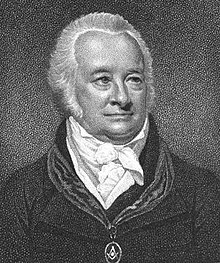Lectures of the Three Degrees in Craft Masonry
| Part of a series on |
| Freemasonry |
|---|
 |

The Lectures of the Three Degrees in Craft Masonry is a series of manuals on
Purpose
The question and answer procedure was the traditional way in which Freemasons were instructed in
History

Origins of the Lectures
From the 18th century onwards, there were different systems of Masonic Lectures in circulation. William Preston's system of Lectures, developed from 1772 onwards, and John Browne's Master Key, first published in full in 1801, were the first to reach a broader audience. By the time the United Grand Lodge of England (UGLE) was formed in 1813 there were at least three systems of Masonic Lectures current in the London area.[2]
Union of 1813
At the formation of the United Grand Lodge of England (UGLE) in 1813, the various Masonic rituals then in use in England and Wales were standardized under the supervision of the Duke of Sussex.[3] A new Masonic ritual for use by UGLE was worked out by the "Lodge of Reconciliation" and it was soon realized that the system of Lectures would also have to be adapted, for the purpose of instruction in the new UGLE procedures and to suit the Masonic symbolism to the new UGLE practice.[2]
When the Duke of Sussex was asked what should be done about the Lectures, he replied to the effect that the
Grand Stewards' Lodge
Over time, the version of the Lectures developed for the Grand Stewards' Lodge in London became the most widely accepted. The system of questions and answers demonstrated regularly by the Grand Stewards' Lodge was based closely on the catechism contained in John Browne's Master Key, which itself represented the standard usage of the Lectures by the former
Emulation Lodge
When the regular demonstrations of the Lectures by the Grand Stewards' Lodge ceased in the 1860s, the Emulation Lodge of Improvement, formed in 1823, became the leading body regularly working them.[2] The Emulation Lodge of Improvement has demonstrated the Grand Steward's Lodge system of Lectures continuously since 1823, although rehearsal of the Emulation Ritual has always been its main work. These lectures are still published by Lewis Masonic to this day.
While some light alterations have been made since the 1860s to the version of the Lectures that was originally developed for the Grand Stewards' Lodge (indeed the Grand Stewards' Lodge made some revisions in the early 1860s), the Lectures still demonstrated by the Emulation Lodge of Improvement are largely those which were worked in 1817 and, except for the necessary corrections to fit them to the new UGLE procedures after 1813, they have very much the same content as the Lectures worked in English Freemasonry in the late 18th century.[2]
